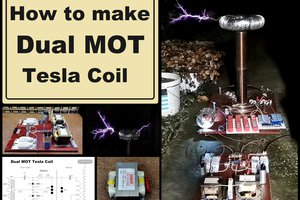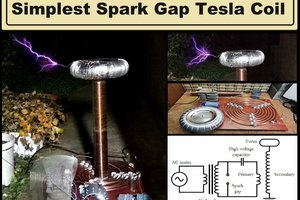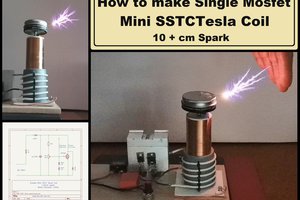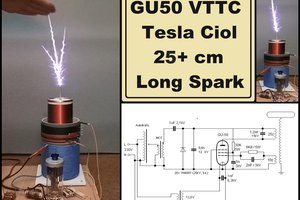Some time ago I presented you a video in which I analyzed a super cheap Tesla Coil driver that cost less than $20. This time I will also present you a relatively cheap other type of driver that costs about $50, but is complete and contains a half-bridge circuit with two power mosfets with appropriate heat sinks, as well as a full-wave rectifier.
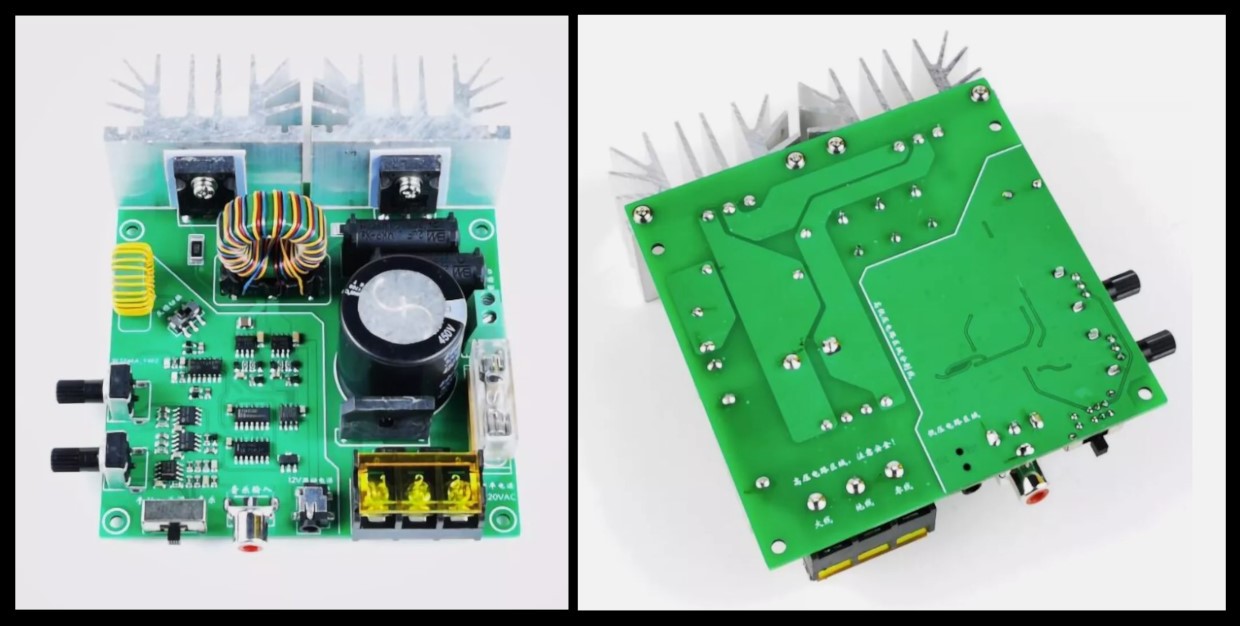
In short, in this case I only need the coils, the primary and the secondary to assemble a functional Tesla Coil. In this particular example, I'm using a factory-made primary and secondary coil with top load, so it only took me a few minutes to get the device up and running.
First, let's examine the board itself and the elements on it. It is immediately clear that it is quality made on a double-sided laminated PCB. It has the low-voltage part, which is separated from the high-voltage part by white border.
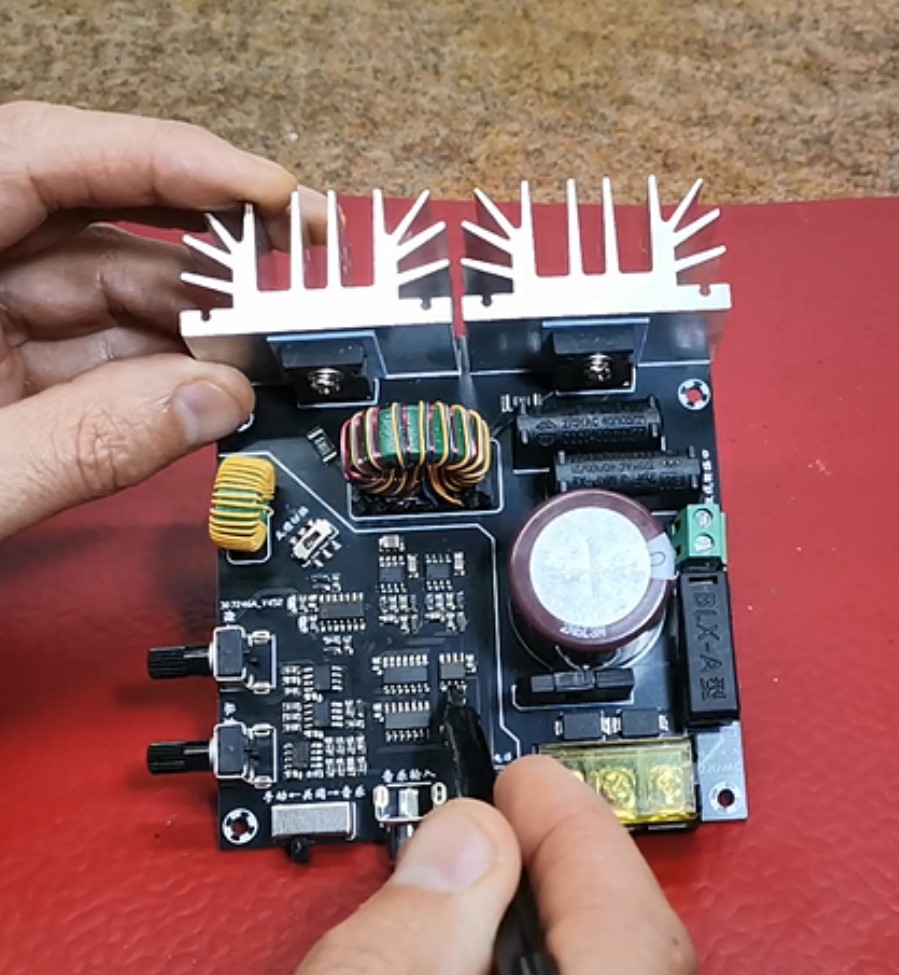
Unlike the previously mentioned module, in this case SMD components are used, which reduces the required board space and cost, and also simplifies the manufacturing process. Low voltage part is powered by an external 12V DC source. Switch selects the operating mode between interrupted or audio modulated. Componets used in interrupter and audio modulator part are two 555 timer ICs, LM393 comparator, and a 74HC14. With the two potentiometers, independent pulse width and frequency can be adjusted in interrupter mode.
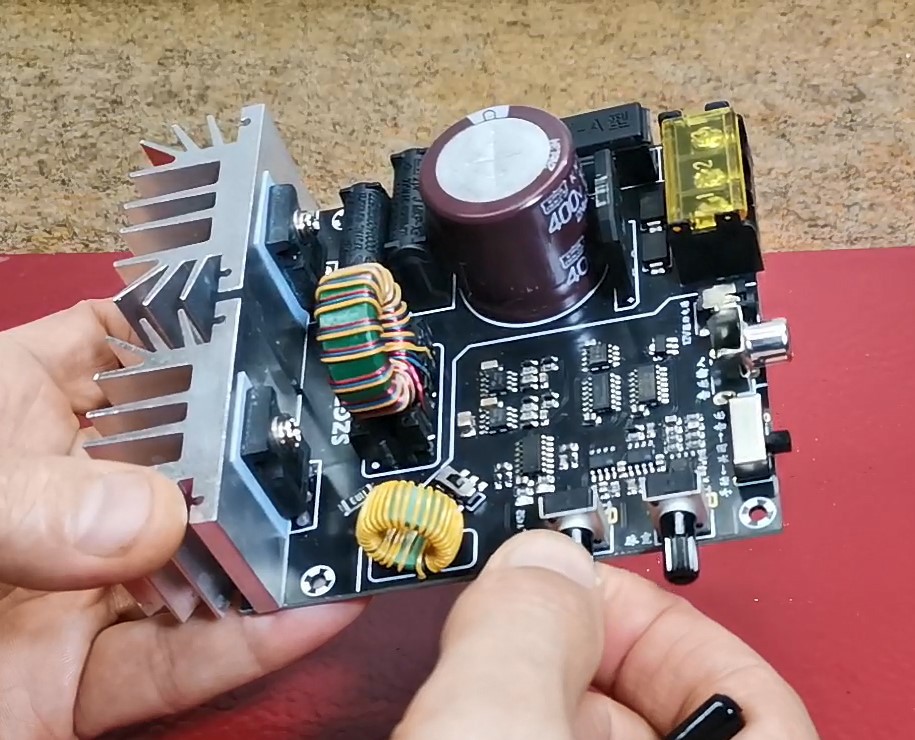
This project is sponsored by PCBWay. They has all the services you need to create your project at the best price, whether is a scool project, or complex professional project. On PCBWayyou can share your experiences, or get inspiration for your next project. They also provide completed Surface mount SMT PCB assemblY service at a best price, and ISO9001 quality control. Visit pcbway.com for more services.

In music mode only the pulse width can be adjusted, because the frequency is controlled by the music. The small magnetic loop feedbacks the ground wire of the secondary coil. Depending on the direction of the wire, the position of this miniature switch changes. The other part consists of a UCC 37324 dual channel gate driver chip, followed by two complementary MOSFETs of the AO4606 type. In this way, overloading of the gate driver chip is avoided. There is a gate driver transformer to which are connected two power MOSFETs of the type W20NM60, mounted on relatively massive heat sinks, which in terms of characteristics correspond to the well-known IRFP460. The high-voltage section consists of a fuse, a Gretz bridge, and a filter capacitor with a large capacity of 220 microfarads, providing power for the half-bridge MOSFET configuration. The primary winding of the Tesla coil is connected to green terminal, and on other terminal a voltage of maximum 220V. Before I start testing, let me warn you that this experiment will use high voltages that are dangerous to life and health, so I do not recommend repeating it at home unless you have extensive prior knowledge in this area. According to the manufacturer's recommendations, the inductance of the primary coil is recommended to be at least about 7uH, and the resonant frequency of the secondary to range between 200 and 800 Kilohertz.
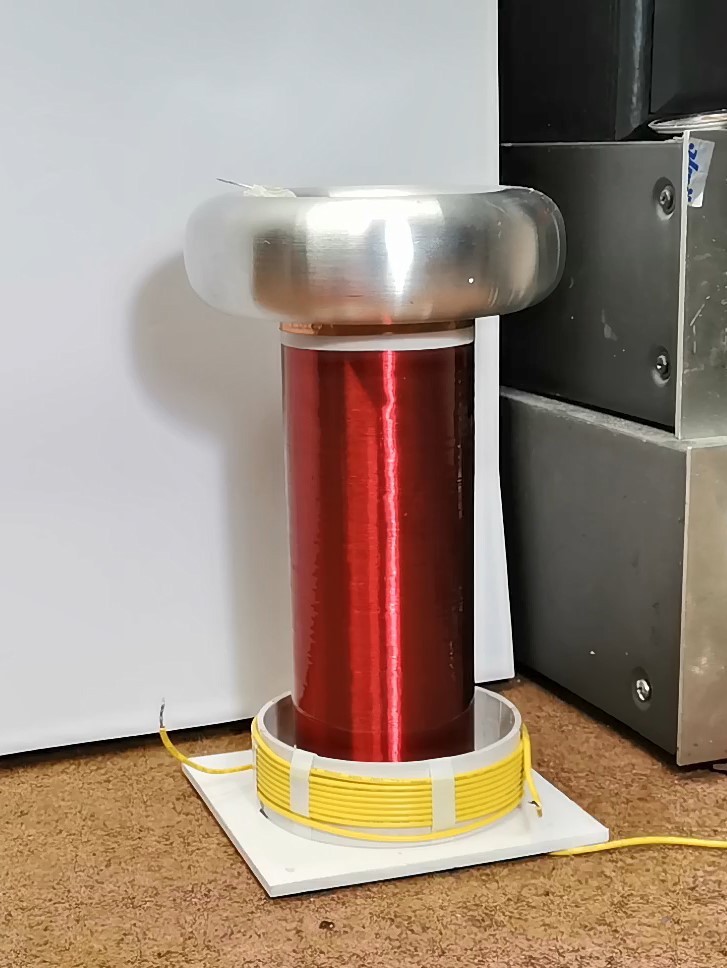
Specifically in this case, the inductance of this primary coil is 7µH, which is the minimum allowed value, in order to obtain the best possible results. The secondary has a resonant frequency of about 240KHz (about 1200 turns on 7cm diameter body) calculated together with the top load. Now let's see how this device works in real conditions. First we connect the primary coil to the appropriate place, then we pass the beginning of the secondary through this magnetic loop, then to ground. Then we connect a 12V DC source to the appropriate connector, and finally a mains power supply which is good to connect via a variac if you have one. We set the switch to interrupter mode. Now gradually increase the voltage to approximately 50 volts. I bring the...
Read more » mircemk
mircemk